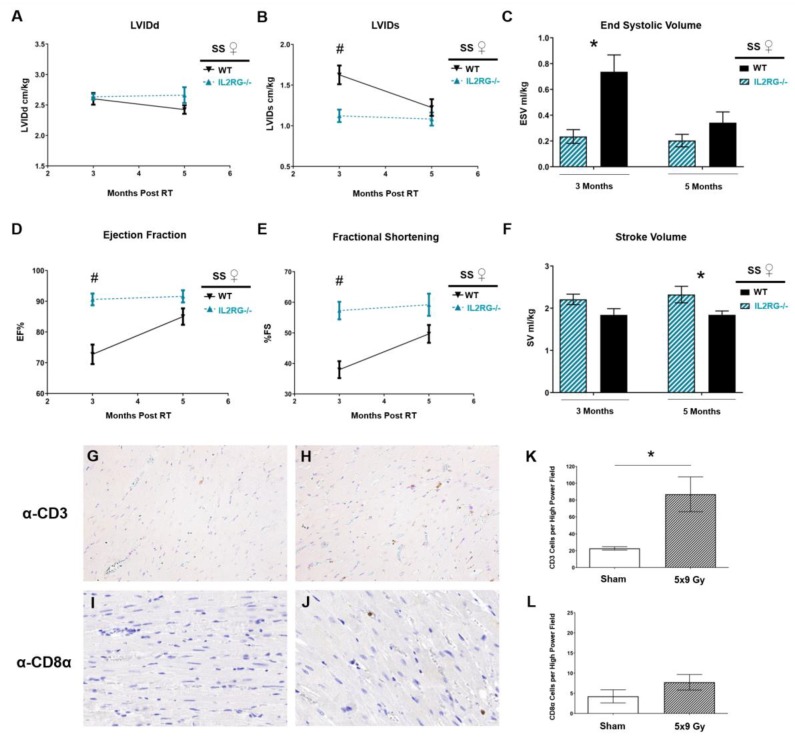Figure 7.
SS IL2RG−/− immune-compromised rats versus SS WT immune-competent rats receiving fractionated 9 Gy × 5 cardiac radiation have slightly less cardiac damage measured via echocardiogram. Female SS IL2RG−/− and SS WT rats received 9 Gy × 5 localized cardiac radiation, and echocardiograms were performed at three and five months post-RT revealing that (A) left-ventricular internal diameter at end-diastole (LVIDd) was not significantly different between the groups at three or five months after 9 Gy × 5. (B) LVID at end-systole (LVIDs) and (C) end-systolic volume (ESV) were significantly lower in the SS IL2RG−/− rats versus SS WT rats at three months, which can be associated with improved cardiac function. The (D) ejection fraction (EF) and (E) fractional shortening (FS) were increased in SS IL2RG−/− versus SS WT rats, indicating improved function. However, these changes did not persist at five months post-RT. (F) Stroke volume (SV) was significantly elevated at five months post-RT in the IL2RG−/− rats compared to WT, also indicating improved cardiac function. Values are means ± SEM; n = 11/WT and n = 6/IL2RG−/−; * p < 0.05, # p < 0.01. Representative images of CD3 staining in heart tissue of rats given either (G) sham or (H) 5 × 9 Gy RT. Representative images of CD8α staining in heart tissue of rats given either sham (I) or 5 × 9 Gy RT (J). Cardiac T-cell infiltration was quantified as the average number of cells per high-power field for CD3-positive (K) and CD8α-positive (L, p = 0.29 for comparison of sham versus 9 Gy × 5) cell populations (values are means ± SEM, n = 3–6/group, * p < 0.05). All images are at 40× magnification.

